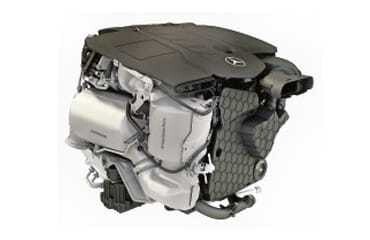Engine symposium: Race of drive systems
At the 39th Vienna ENGINE SYMPOSIUM, European suppliers and car manufacturers showed how they want to make the disreputable diesel engine fit for the future. At the same time, they presented alternative drive technologies - the race will be exciting.

Engine symposium: Race of drive systems



With pithy words, senior Bosch drive developer Andreas Kufferath announced a small sensation at the Vienna Engine Symposium: “We are well on the way to making the diesel engine almost emission-free.” With a test vehicle developed by Bosch, it was possible to reduce nitrogen oxide emissions to 13 milligrams per kilometer and thus to around a tenth of the future strict exhaust gas limits. Even in the realistic RDE tests in road traffic, the sensationally low values were maintained - a technological breakthrough and thus the possible revival of a form of drive that had been declared dead. Assuming it isn't already too late, because the image of the diesel engine is in deep decline after the manufacturers' cheating has been exposed.
“We are well on the way to making diesel engines virtually emission-free.”ANDREAS KUFFERATH, BOSCH DRIVE DEVELOPER
EXPENSIVE EXHAUST TREATMENT
As every year, around 1,000 engine experts from all over the world came to the Vienna International Engine Symposium in the Hofburg and presented their latest research results and new developments. In his presentation, Andreas Kufferath explained how his developers solved the diesel engine's emissions problem: "We improved the interaction of existing and proven components and, above all, optimized the thermal management." The problem so far: A NOx catalytic converter cools down quickly when coasting and in stop-and-go traffic and largely stops working. The remedy is to heat up the catalytic converter either through post-injection, which naturally slightly increases the vehicle's fuel consumption, or with power surges from a 48-volt electrical system. An effort that only really pays off for vehicles from the upper middle class onwards; such complex exhaust gas purification is simply too expensive for small cars. Kufferath sees the matter pragmatically: “If you only drive in the city, you are probably better off with an electric car.”
NEW DIESEL IN THE SHOP WINDOW
In any case, Volkswagen, Mercedes-Benz and BMW are not thinking of saying goodbye to a technology that has brought them enormous profits over the last few decades, despite falling demand. All three manufacturers confidently presented new diesel engines:
▶ Markus Köhne, head of VW diesel engine development, presented the new 2.0-liter four-cylinder diesel engine EA288 evo with an effective SCR system at the engine symposium. The unit meets the limits of the current emissions legislation on the test bench and in “real driving” and is technically designed to meet the requirements of the next emission level from 2019. In addition, CO2 emissions were reduced by up to ten percent compared to the previous engine and power and torque were increased by up to nine percent. The new VW diesel will initially be used in Audi models with a longitudinally installed engine and mild hybrid and is expected to replace the engines of all of the group's diesel vehicles by 2021. Two performance classes are offered with spreads of 100 to 120 kW and 121 to 150 kW.
▶ Franz Steinparzer, head of diesel engine development at BMW Steyr, also presented a new family of diesel engines whose CO2 and NOx emissions comply with the prescribed limits. Thanks to modernized injection technology, two-stage turbocharging and a highly efficient exhaust gas reduction system, the typical BMW performance and dynamic characteristics are retained. The unit is used in the BMW X4 M40d and produces 240 kW with a significant reduction in fuel consumption compared to the previous vehicle.
▶ Daimler is also sticking to the further development of diesel technology and is expanding its OM 654 diesel engine family. With the new 1.6 l entry-level engine, Mercedes is rounding off its engine range in positions 180d and 200d with 90 and 118 kW respectively. In addition to achieving a very low emission level and meeting RDE Stage 1 or EU 6d TEMP, the development goal was a significant reduction in consumption, explained Markus Kemmner, department head at Daimler AG. The use of the new entry-level engine is planned for 2018 in the E-Class and in the facelifted C-Class.
ELECTRICITY AND HYDROGEN
At the Hofburg, Audi presented its first series-produced electric drive for use in the Audi e-tron. The heart of the electrical system is a 95 kWh high-voltage storage system based on 400 volts - an Audi development, as Siegfried Pint, Head of Development-Electrification-Drive at Audi, emphasized in his presentation. The lithium-ion battery is manufactured in the Audi factory in Brussels and ensures a range of around 500 kilometers. The two electric drive axles are built at the Audi engine plant in Hungaria. Mercedes-Benz, on the other hand, is continuing to develop fuel cell drives. Around 30 percent more compact than before, the hydrogen-powered drive system can now be completely accommodated in the engine compartment for the first time, reported Christian Mohrdieck, Director Fuel Cell at Daimler. In the new drive, which will be used for the first time in the Mercedes-Benz GLC F-CELL, the power density of the fuel cell stack could be doubled and the platinum content reduced by 90 percent, resulting in a significant cost reduction.

 Suche
Suche
 Mein Konto
Mein Konto